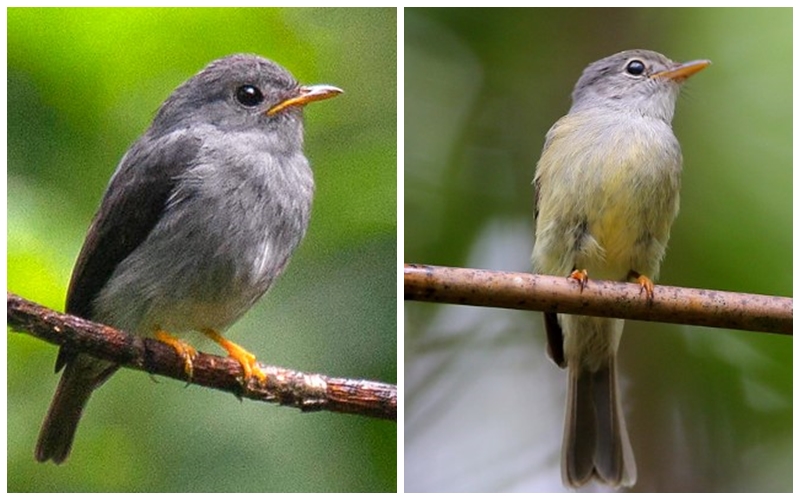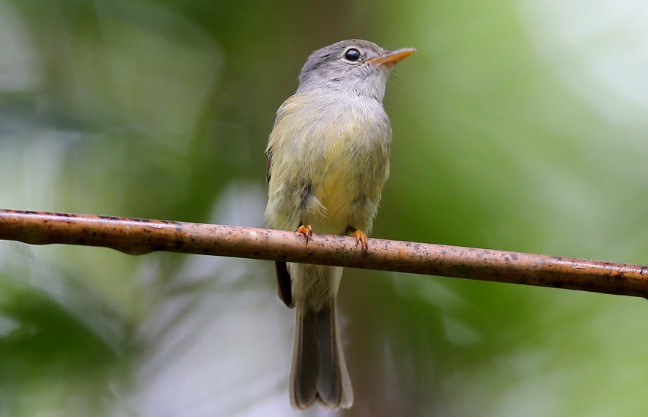Family: The yellow-legged flycatcher (Kempiella griseoceps) belongs to the Petroicidae family of passerine birds.
Behavior and Habitats: Yellow-legged Flycatcher is distinguished from Lemon Bellied Flycatcher by its slender form and rich yellow legs. A much more active species, it also lives in rainforests and vine scrubs. In most cases, it roams locally without establishing a territory, at least when it is not breeding.
In the forest edge and upper branches, it gleans, hawks, and picks flushed insects off foliage and branchlets and catches them in midair as it flutters back and forth between perches. The tails of sitting birds are frequently raised and waved. Nest-building and brooding may be performed by the female without assistance, only foraging with the male during incubation.
The fact that both sexes brood in other Microeca flycatchers needs to be confirmed. The young are dispersed soon after fledging, while adults remain in pairs or become solitary throughout the year.
Other Names: The bird is also known as Little Yellow Robin, Little Yellow Flycatcher, and Yellow-footed Flycatcher.
Size: the size of the Yellow-legged Flycatcher is about 120 mm in length.
Identification: Sexes are similar in adults. Mid-grey is the color of the head and nape. The back and scapulars are dull green. The wings and tail are grey-brown with olive edges, and the tail feathers are tipped with faint white.
The face and ear covers are brown-grey; the lores are off-white. There is an off-white throat and upper breast, grading to pale lemon on the lower breast, belly, and undertail washed gray on the flanks. Dark brown eyes. The upper mandible is black, and the lower flesh is yellow. Rich orange-ye/low feet.

Immature: An immature bird’s feathers are duller than an adult’s; upper wing coverts retain small white tips when they are molted. In juveniles, the upper parts are heavily white.
Call: When feeding or in contact, the Yellow-legged Flycatcher calls erratically zzt-zzt-zzt.
Song: Yellow-legged Flycatchers sing trills and whistled notes, probably only by males.
Nesting and Breeding: Breeding and nesting take place between October and February. On horizontal branches or forks, the bird builds a nest of roots bound with cobwebs and decorated with paperbark and lichen; about 10-15 m above ground.
Eggs: They lay two pale blue eggs, which are speckled and blotched dark brown and grey; long-oval, measuring about 15 x 12 mm.
Distribution: On the Cape York Peninsula west to Weipa and south to Silver Plains, Yellow-legged Flycatchers are commonly found in rainforest and its edges, including paperbark and eucalypt woodland. Unconfirmed records from the Atherton-Cooktown bloc. New Guinea is also included. Australia has one endemic race, but there are about four races.
Classification: Yellow-legged fly robins were previously classified as Microeca. Based on the results of the molecular phylogenetic study published in 2011, the species was moved to the resurrected Kempiella genus introduced by Australian ornithologist Gregory Mathews. Read More – Grey Currawong (Strepera versicolor)







